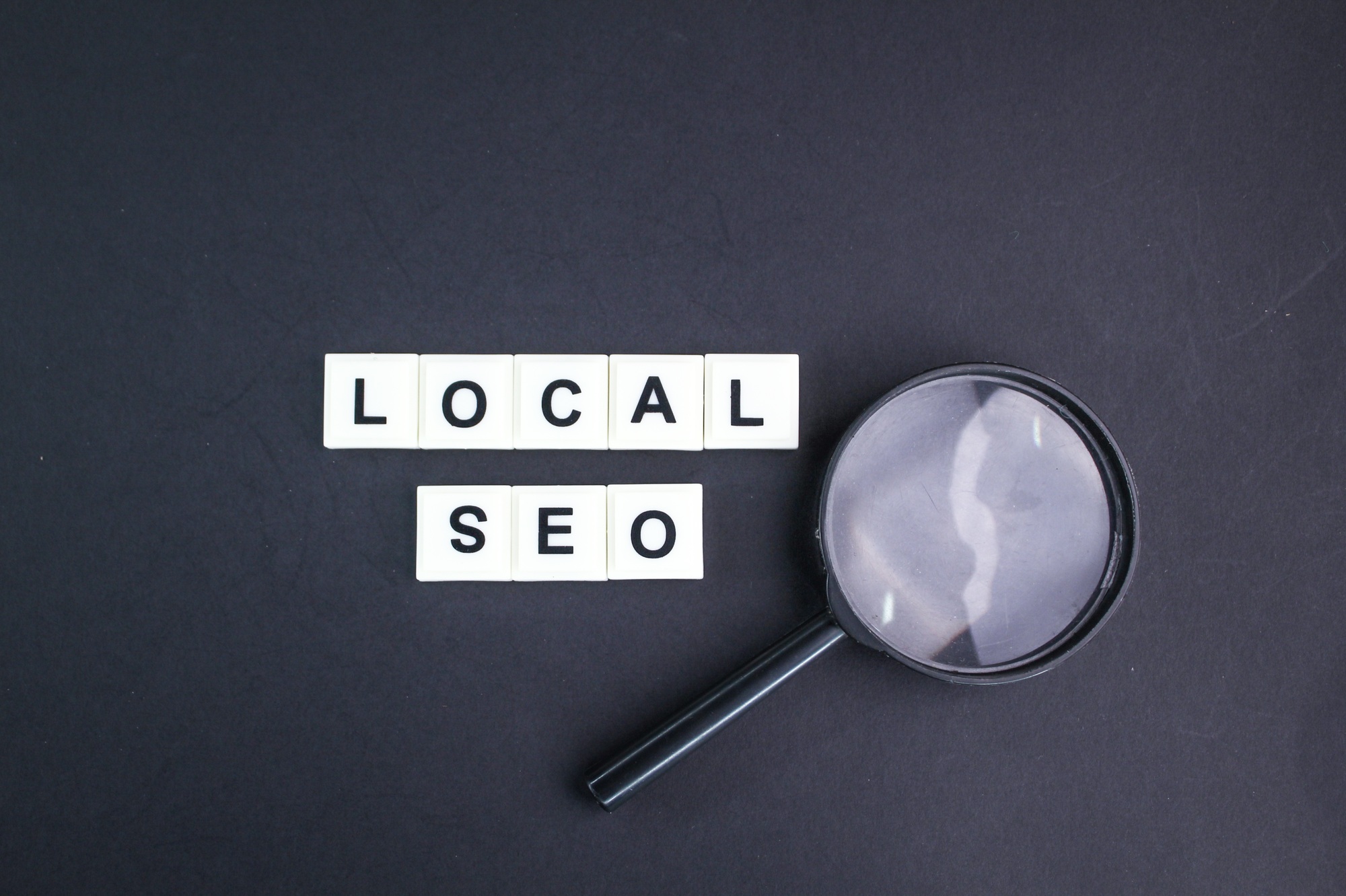Key Takeaways

- Master Local SEO for Success: Understanding and implementing local SEO strategies is vital for small businesses to connect with nearby customers actively seeking their products and services.
- Optimize Google My Business: Ensuring accurate and complete information on your Google My Business listing enhances your visibility and builds credibility with potential customers.
- Utilize Local Keywords: Research and incorporate localized keywords into your website content and Google My Business profile to improve rankings in local searches.
- Encourage and Manage Reviews: Customer reviews not only build trust but also positively influence local rankings; engaging with customer feedback is crucial for maintaining a good reputation.
- Maintain Consistency Across Platforms: Ensure consistent name, address, and phone number (NAP) information across all online platforms to reinforce reliability and improve search engine trust.
- Track Performance Metrics: Regularly monitor key performance indicators, including website traffic, conversion rates, and social media engagement, to evaluate and refine your local SEO strategy effectively.
In today’s digital landscape, mastering local SEO is essential for any business looking to thrive in its community. With more consumers turning to search engines to find local products and services, optimizing your online presence can make all the difference. A well-executed local SEO strategy not only boosts your visibility but also drives foot traffic and increases sales.
This local SEO checklist will guide you through the key steps needed to enhance your online presence. From optimizing your Google My Business listing to gathering customer reviews, each element plays a crucial role in attracting local customers. Get ready to dive into actionable tips that’ll help you stand out in your local market and connect with your audience effectively.
Understanding Local SEO

Local SEO focuses on optimizing your online presence to attract more customers from relevant local searches. As a small business, mastering local SEO is crucial since it connects you with nearby customers actively seeking your products and services.
Search engines prioritize local results, meaning a well-optimized Google My Business listing can significantly enhance your visibility. Ensure all your business information—like name, address, and phone number (NAP)—is accurate and consistent across platforms.
Incorporate localized keywords in your website content. Use phrases that combine your offerings with geographic locations, targeting search terms that your audience uses. This practice improves your chances of ranking higher in local search results.
Encouraging customer reviews on platforms like Google and social media not only builds credibility but also boosts your local rankings. Aim for positive feedback that highlights your services. Responding to reviews, both good and bad, showcases your engagement and commitment to customer satisfaction.
Implementing effective local marketing strategies, like localized ad campaigns, can drive traffic to your physical store. Use social media to promote events or specials targeting your local community. These efforts create a cohesive online presence that reaches potential customers where they spend their time.
Incorporate all these elements into your local SEO strategy to thrive in your community and foster lasting connections with customers.
Importance of a Local SEO Checklist

A local SEO checklist is vital for small businesses looking to improve their online visibility and connect with local customers. By optimizing your online presence, you attract more relevant traffic and enhance your engagement within your community.
Key Benefits for Businesses
Improving local SEO can lead to significant increases in customer inquiries and foot traffic. Businesses that optimize their online presence often experience enhanced brand visibility, which builds trust and credibility. Better visibility translates into higher search rankings on platforms such as Google, making it easier for local customers to find your services. Implementing a local SEO checklist ensures that you leverage local marketing tactics that resonate with your target audience.
Enhancing Visibility in Local Searches
Effective local SEO enhances your visibility in local searches where potential customers seek products and services. By integrating localized keywords into your website content and optimizing your Google My Business listing, you rank higher in search results. Accurate and consistent business information (Name, Address, Phone Number) across all platforms reinforces trust with search engines and consumers. Utilizing social media as part of your local marketing strategy further amplifies your visibility, connecting you with the local community and driving engagement.
Essential Components of a Local SEO Checklist

A strong local SEO checklist is vital for small businesses aiming to enhance their online presence. Focusing on key strategies helps attract local customers and improves search visibility.
Optimizing Google My Business
- Verify Your Business: Verify your business through Google My Business to establish trust and credibility with potential customers.
- Complete Your Profile: Fill out your Google My Business profile completely. Accurate and up-to-date information ensures customers find your business easily.
- Maintain Accurate Information: Keep your business’s name, address, and phone number (NAP) consistent across platforms and within your Google My Business profile. This consistency builds reliability.
- Choose Relevant Categories: Select primary and secondary categories that relate to your services. Relevant categories help Google understand your offerings.
- Add High-Quality Photos: Include semi-professional photos of your business. High-quality images attract attention and encourage more customer interactions.
Using Local Keywords Effectively
- Research Local Keywords: Identify specific keywords that relate to your location and services. For instance, “best taco truck in [city name]” targets local searchers effectively.
- Incorporate Keywords in Your Content: Use local keywords in website content, meta descriptions, and blog posts. This integration boosts your search ranking in local queries.
- Utilize Keywords in Google My Business: Include localized keywords within your Google My Business description. Doing so optimizes your visibility for relevant searches.
Building Local Citations
- List Your Business in Online Directories: Ensure your business is listed in key local directories and platforms. Examples include Yelp and Yellow Pages.
- Ensure Consistency Across Citations: Keep NAP information consistent across all citations. Inconsistent information can confuse customers and search engines alike.
- Monitor Your Citations Regularly: Regularly check your citations for accuracy. Correct any discrepancies promptly to maintain credibility.
Managing Online Reviews
- Encourage Customer Reviews: Ask satisfied customers to leave positive reviews on your Google My Business listing. Reviews enhance your reputation and attract new clients.
- Respond to Reviews: Engage with customers by responding to reviews, both positive and negative. This interaction shows that you value customer feedback and can improve customer relations.
- Use Reviews in Marketing: Feature glowing customer reviews in your local marketing efforts, including on social media and your website. Positive testimonials can significantly influence new customers.
Ensuring Mobile-Friendliness
- Optimize Your Website for Mobile: Design your website to be mobile-responsive. An optimized mobile site enhances user experience and encourages local customers to engage.
- Simplify Navigation: Keep navigation intuitive on mobile devices. Ensure contact information is easy to find, and minimize loading times for better user retention.
- Test Your Mobile Site: Regularly test your site on different mobile devices. Address any issues that could hinder performance, ensuring a seamless experience for users.
These components form a comprehensive local SEO checklist for small businesses, driving improved visibility and customer engagement in your local market.
Tracking and Measuring Local SEO Success

Tracking and measuring local SEO success involves monitoring key performance indicators (KPIs) to evaluate your local marketing efforts. Use the following metrics to assess your progress effectively:
- Google My Business Insights: Analyze views, searches, and actions taken on your Google My Business listing. Insights provide data on how customers interact with your profile, helping identify successful areas.
- Website Traffic: Monitor traffic from local searches using tools like Google Analytics. Focus on identifying which regions bring in visitors, and assess which keywords drive the most traffic.
- Conversion Rates: Track the number of visitors who take desired actions, such as making a purchase or contacting your business. Higher conversion rates typically reflect effective local SEO strategies.
- Customer Reviews and Ratings: Evaluate the quantity and quality of customer reviews on platforms like Google. Responses to reviews also impact your local ranking, highlighting the need for prompt customer engagement.
- Local Keyword Rankings: Measure your business’s rankings for targeted local keywords. Tools like SEMrush or Ahrefs offer keyword tracking capabilities, helping you stay informed about your visibility in local search results.
- Social Media Engagement: Assess interactions on social media platforms. Engagement metrics indicate how well your local marketing resonates with your audience and can drive traffic to your website.
Regularly review these metrics to adjust your local SEO strategy accordingly. By focusing on these key areas, you’ll enhance your online presence, attract more local customers, and grow your small business effectively.
Conclusion

Mastering local SEO is essential for your business to thrive in today’s competitive landscape. By following the local SEO checklist and implementing effective strategies, you can significantly boost your visibility and connect with your target audience.
Remember to keep your business information accurate and consistent across all platforms. Prioritize gathering customer reviews and optimizing your Google My Business profile. These steps not only enhance your credibility but also improve your local search rankings.
Stay proactive by tracking your performance metrics. Regularly reviewing these insights allows you to refine your approach and ensure you’re meeting your local customers’ needs. With dedication and the right strategies, you can foster lasting relationships and drive growth in your community.
Frequently Asked Questions
What is local SEO and why is it important for businesses?
Local SEO focuses on optimizing a business’s online presence to attract customers from relevant local searches. It’s crucial for small businesses as it enhances visibility, drives foot traffic, and increases sales by connecting them with local customers who are actively searching for their products or services.
How can I optimize my Google My Business listing?
To optimize your Google My Business listing, ensure your profile is complete with accurate business information (NAP), select relevant categories, and add high-quality images. Regularly update your information and encourage customers to leave reviews to enhance credibility and improve local search rankings.
What role do customer reviews play in local SEO?
Customer reviews are essential for local SEO as they build credibility and influence potential customers. Positive reviews not only improve your online reputation but also enhance your local rankings in search results, increasing your chances of attracting more customers.
How can I incorporate localized keywords into my website content?
To incorporate localized keywords, identify relevant phrases related to your products or services that include your business location. Integrate these keywords naturally throughout your website content, including titles, headings, and descriptions, to improve your visibility in local search results.
What are some key components of a local SEO checklist?
A key local SEO checklist includes verifying your Google My Business profile, maintaining accurate NAP information, selecting relevant categories, creating local citations in online directories, managing online reviews, and ensuring your website is mobile-friendly.
How can social media help with local SEO strategies?
Social media amplifies your local SEO efforts by enhancing visibility and engagement within your community. Sharing localized content and promotions can drive traffic to your physical store and encourage customer interactions, ultimately fostering strong connections with your local audience.
How can I track the success of my local SEO efforts?
To track local SEO success, monitor key performance indicators (KPIs) such as Google My Business Insights, website traffic from local searches, and conversion rates. Analyze customer reviews, local keyword rankings, and social media engagement to assess the effectiveness of your strategies and make necessary adjustments.
What benefits can businesses expect from improving their local SEO?
Improving local SEO can lead to increased customer inquiries, higher foot traffic to physical locations, enhanced brand visibility, and better search rankings. A strong local presence ultimately leads to more sales and stronger connections with the community.
Image Via Envato: rfaizal707, innu_asha84, fauziEv8, MargJohnsonVA, LightFieldStudios, puhimec



